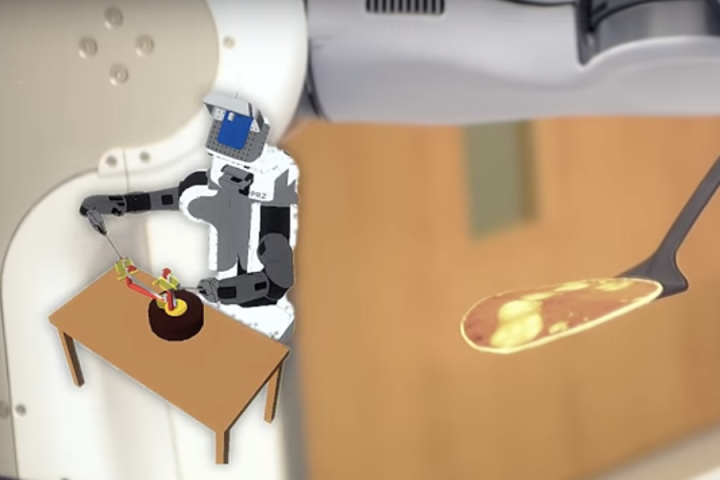
The key to this “teaching” project is to construct a system permitting robots to both learn and communicate in a way that’s similar to human beings, perhaps even with the use of language. Currently, robots distill their knowledge from the programs their human controllers have preloaded into them. But hopefully, aided by RoboHow’s contribution, robots will be able to actually process information for themselves after reading or hearing a set of instructions, and then remember what they’ve learned so that they can apply the same concepts in the future.
Scientists are putting together open-ease.org, the Open Knowledge for AI-Enabled Robots, that is effectively a compilation of how-to’s that robots are able to understand. The primary task for now is centered on pancakes, which may seem menial, but actually requires a number of special skills that seem like second nature to humans. Robots have to learn how to open a container, pour batter, and hold and manipulate a spatula to flip the pancake, along with how to recognize when it has reached that perfect golden brown.
Professor Michael Beetz of Universität Bremen, the German institution that is taking the lead on this new challenge, explained, “If we can, with our robots, flip any pancake with any tool we have, then we can probably perform most of the challenging manipulation tasks that there are in daily life. But we need to teach the robot to manipulate, build a knowledge base, and then connect the two. In future, we want the robot to be able to ask ‘How do I clean this chair?’ and get the answer immediately.”
Welcome to the 21st century friends, where Watson makes recipes and robots cook them.
Editors' Recommendations
- Tesla’s Optimus humanoid robot can now dance like Elon Musk
- The squishy Sensiworm robot goes places other robots can’t
- Robots deployed to assist New York City police … again
- Spot’s latest robot dance highlights new features
- Space station’s new robotic arm springs to life


